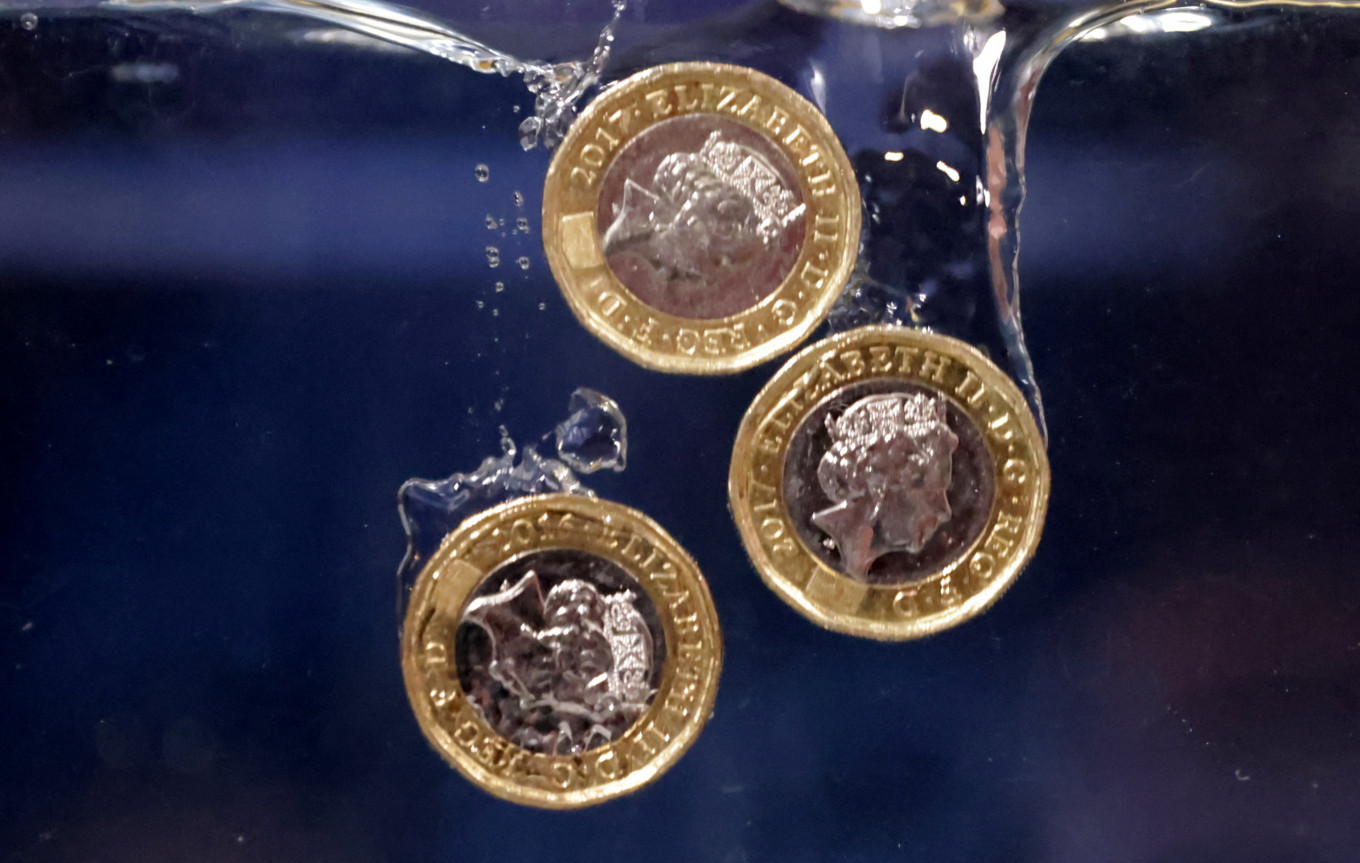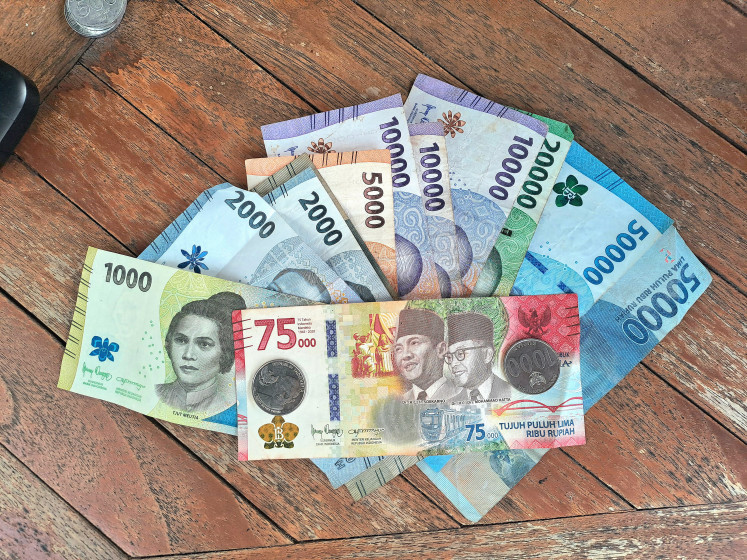Popular Reads
Top Results
Can't find what you're looking for?
View all search resultsPopular Reads
Top Results
Can't find what you're looking for?
View all search resultsEuro, sterling knocked by global growth worries
The euro and sterling fell on Wednesday as concerns resurfaced that interest rate hikes from major central banks to contain inflation run the risk of a sharp global growth slowdown or recession. British consumer price inflation hit a new 40-year high at 9.1 percent.
Change text size
Gift Premium Articles
to Anyone
T
he euro and sterling fell on Wednesday as concerns resurfaced that interest rate hikes from major central banks to contain inflation run the risk of a sharp global growth slowdown or recession.
Data showing British consumer price inflation hit a new 40-year high at 9.1 percent sent sterling down almost 1 percent to a near one-week low of $1.2162, before it trimmed some of those declines. It was down 0.2 percent at $1.2254 at 1115 GMT.
With investors turning nervous again about global growth prospects, the safe-haven US dollar gained ground on most peers. The yen hit a fresh 24-year low as rising US and European bond yields contrasted with low Japanese interest rates.
"Recession fears are growing as central bankers slow demand to curb inflation. Pro-cyclical currencies are on the back foot and the dollar remains very much in demand," said Chris Turner, global head of markets at ING.
Mike Bell, global market strategist at J.P. Morgan Asset Management, said as real wages are already being squeezed by higher prices in Britain, increasing borrowing costs further "could feel like rubbing salt in the wound" and elevate the risk of a recession.
Wednesday's other main event is the start of US Federal Reserve Chair Jerome Powell's two-day testimony to Congress, with investors looking for further clues on whether another 75-basis-point rate hike is on the cards at the Fed's July meeting.
The dollar index was 0.05 percent higher at 104.5. The euro fell 0.1 percent to $1.0524.
The yen was last 0.65 percent higher at 135.96 per dollar, having hit 136.71 in early trade, its lowest since October 1998.
Analysts see no immediate end to a sell-off that has seen the yen weaken 18 percent this year from 115.08 at the end of 2021.
The currency has been weakening as higher energy prices put pressure on Japan's current account and because of the ever-widening gap between yields on Japanese government bonds and US Treasuries.
The Bank of Japan last week maintained ultra-low interest rates and vowed to defend its policy of yield curve control (YCC), which effectively caps the yield on the 10-year Japanese government bond at 0.25 percent.
"Dollar/yen is continuing to trade on the Treasury yields, which have been stable but with the 10-year staying above the 3.20 percent level, while the Bank of Japan has done a lot to defend YCC," said Redmond Wong, market strategist at Saxo Markets Hong Kong.
Among commodity currencies, the Norwegian crown fell 1.3 percent against the dollar to 9.9750, while the Australian dollar fell 0.94 percent to $0.6907, with low commodity prices also weighing.










